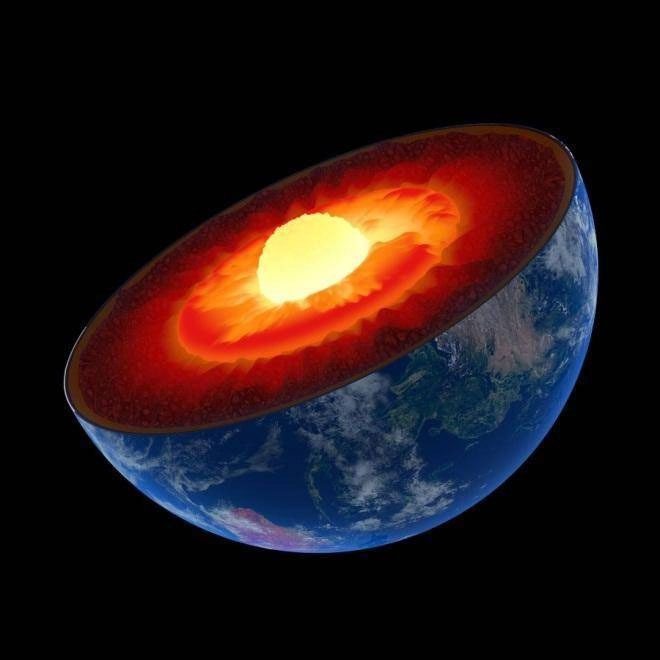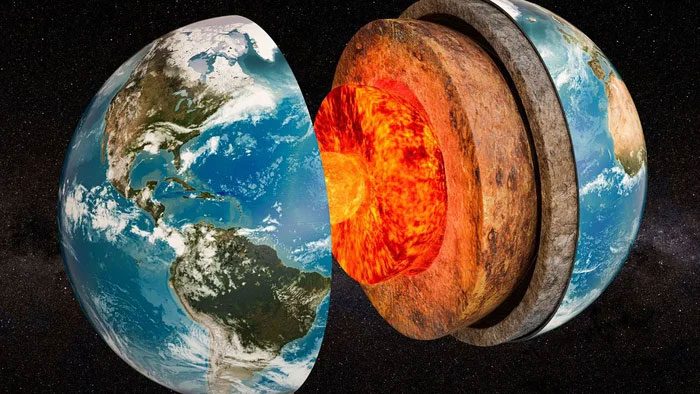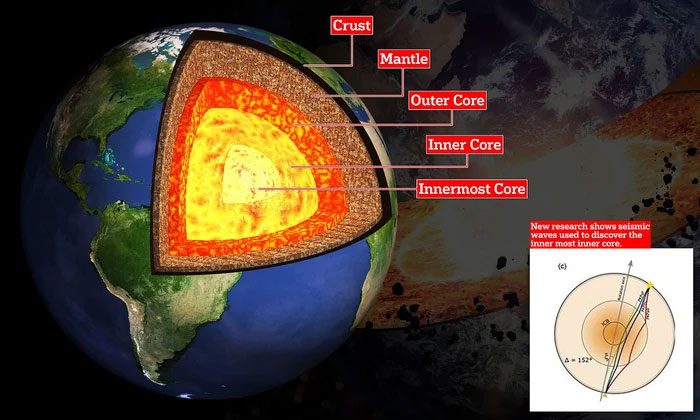The temperature of the Earth’s core is around 6,000 degrees Celsius, even higher than the surface temperature of the Sun. Furthermore, the Earth’s core is larger than that of Pluto. So why can’t humans feel such intense heat beneath their feet?
First, think about a cold winter day when you wear a thick sweater. What happens? Is the inside of the sweater warmer than the outside? Or consider a frozen lake in winter. The water beneath the ice can still exist in liquid form and can reach 4 degrees Celsius at deeper levels. Why doesn’t this cause the ice on the lake’s surface to melt?
Although the principles in these two examples are slightly different, both illustrate that temperature can be effectively insulated if there is a “shield” in between. Our Earth is similar; the thick layer of rock nearly 3,000 kilometers on the surface of our planet acts like a sweater and the ice on the lake. This rock layer is thick and helps to prevent the Earth’s core from losing heat.
In other words, our planet has not yet reached thermal equilibrium, and therefore heat cannot be effectively transferred from the core to the surface.

The Earth’s core is the innermost part of the Earth. As discovered through seismic studies, it is a solid sphere with a radius of about 1,220 kilometers, only 70% of the radius of the Moon. It is believed to contain an iron-nickel alloy.
Aside from the initial accumulated heat, most of the new heat generated in the Earth’s core comes from the radioactive decay of several isotopes that have existed for a long time (mainly four radioactive isotopes: uranium-235, potassium-40, uranium-238, and thorium-232). This process continuously generates heat and transmits it outward. However, this heat must then pass through the rock layer and cold air, which is why we cannot feel this heat.
According to Fourier’s law, the greater the temperature gradient, the faster the heat conduction occurs. The surface loses heat to the cold night sky very quickly, just like the water on a lake’s surface at the beginning of winter, losing heat much faster than the layers of water below.

About 1.5 billion years ago, the Earth had a hot core that was significantly losing heat in a puzzling manner. Subsequently, after cooling to a moderate level, part of it solidified (the inner core) and sank into the remaining part (the outer core), taking much iron and nickel with it. This is how the inner and outer cores were formed.
Approximately 4.6 billion years ago, after the Solar System was formed, some debris and cosmic dust began to collide continuously, gradually merging through gravitational forces to form the early Earth. However, at that time, our planet had a rather terrible environment, with red fissures everywhere, and magma could erupt from the ground at any moment.
Along with continuous collisions with asteroids and comets from the outside world, the temperature of the entire Earth exceeded 1,200 degrees Celsius. Essentially, the Earth at this point resembled a hot, high-pressure mass, continuously affected by external cosmic objects. Geologists often refer to this initial 500 million year phase of the Earth as a hellish landscape.
During this time, the temperature of outer space was much lower than that of the Earth. Therefore, after each collision, the surface of the Earth quickly cooled and turned black, similar to red-hot iron rods dipped in water. Over time, a layer of rock formed on the surface of the Earth, becoming the initial crust of the entire planet.

Each layer of the Earth has a nearly stable temperature.
Additionally, under the rate of heat absorption from within, this imbalance caused the surface to lose thermal energy and cool down. Thus, the temperature would drop rapidly until the surface began to solidify into rock. The deeper the solid rock, the hotter the magma beneath it; however, this process does not occur quickly enough to melt the surface rock layer.
In this way, each layer of the Earth will have a nearly stable temperature, and each of these layers will also release excess thermal energy at the same rate. Consequently, the Earth gradually differentiated into a hot core, a mantle layer, and a cooler crust.
In fact, this surface cools down much faster than we might imagine; the initial crust can achieve stability and cool enough to allow liquid water to be stored on the planet’s surface within a few million years.
This is similar to taking a hot dumpling out of the oven: the outer shell cools quickly, but inside the dumpling remains very hot. As long as you don’t break it open, the dumpling will retain its heat inside.
According to scientists’ calculations, the temperature inside the Earth’s core will remain high as it is now for an extended period of about 1 billion years.

Mechanically, it is divided into five main layers: the lithosphere, asthenosphere, mesosphere, outer core, and inner core. Chemically, it is divided into the crust, upper mantle, lower mantle, outer core, and inner core.
In reality, there are still places where we can feel the heat from the Earth’s core transmitted outward. These include hot springs, volcanic ranges near oceans…


















































